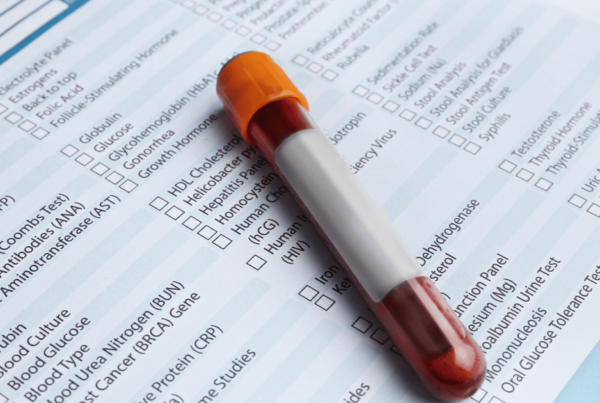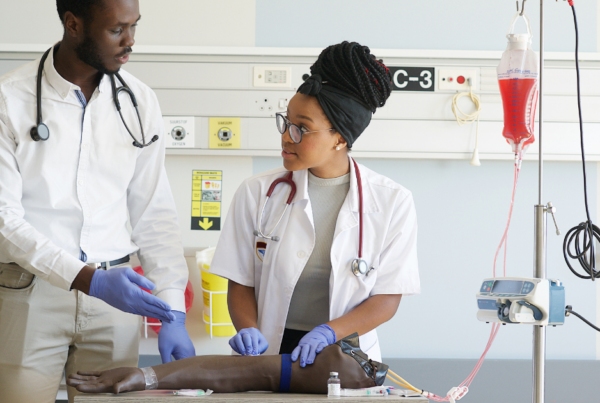Drawing blood from children can be an emotional and challenging experience, both for the child and their caregivers. However, with the right strategies and a compassionate approach, it’s possible to make the process smoother and less stressful. This article offers actionable phlebotomy drawing blood from children advice, tailored for parents, caregivers, and healthcare professionals, ensuring a calm and effective experience.
| Key Takeaways for Phlebotomy Professionals |
| Developing a detailed coping plan tailored to each child’s needs can reduce anxiety and improve cooperation. |
| Comfort positioning and honest communication foster trust and a sense of security. |
| Empowering children with choices and using distraction techniques are effective ways to minimize fear. |
| Managing challenging situations with patience and care leaves a lasting positive impression. |
1. Create a Coping Plan in Advance
Preparation is key to reducing stress during a pediatric blood draw. Developing a coping plan with your child or patient can set the stage for a more positive experience. For example, a parent might involve their child in the planning process by letting them choose a favorite stuffed animal to bring along or practicing deep breathing exercises together beforehand. Healthcare professionals could demonstrate a distraction tool, like a tablet game, during initial interactions to build rapport and familiarize the child with coping strategies.
Tips for Creating a Coping Plan
- Introduce coping strategies: Encourage techniques such as deep breathing, singing, or counting in a soothing tone. These activities help children focus on something other than the procedure.
- Use distraction tools: Bring the child’s favorite toy, book, or electronic device to keep their attention away from the blood draw. Some families find that apps or videos designed for calming children work well.
- Consider comfort aids: Devices like Buzzy®, a vibrating tool shaped like a bee, can be placed on the skin to reduce pain by disrupting pain signals to the brain. Discuss this option with your healthcare provider.
- Discuss pain management options: In cases where children have heightened sensitivity or anxiety, talk to your healthcare provider about topical anesthetics or other pain relief methods.
Why This Matters
A well-thought-out plan reduces fear and creates a sense of predictability, making the experience less daunting for children and their caregivers.
2. Utilize Comfort Positions for Security
Positioning plays a vital role in ensuring the child feels secure during a blood draw.
Effective Comfort Positions
- Caregiver lap positioning: For younger children, sitting on a caregiver’s lap can provide both physical and emotional security.
- Phlebotomist assistance: Collaborate with the phlebotomist to determine the safest and most effective way to hold the child. This reduces movement, ensuring a smooth procedure.
- Gentle restraints if necessary: For highly anxious children, light restraints may be used to ensure their safety and prevent sudden movements.
Benefits of Comfort Positions
Comfort positions create a calming environment and foster trust, which can significantly ease a child’s anxiety. Physically, these positions help reduce muscle tension, making the procedure smoother and less painful. Psychologically, being close to a caregiver or assuming a comfortable stance reduces fear, as the child feels supported and safe. This combination of physical ease and emotional reassurance enhances cooperation and minimizes distress during the blood draw.
3. Explain the Process in Simple, Honest Terms
Children are naturally curious and may feel scared if they don’t understand what’s happening. Using clear and honest language helps alleviate this fear.
How to Describe Sensations
- Tourniquet: Describe it as a “tight squeeze” to prepare the child for the sensation.
- Alcohol pad cleaning: Say it will feel “cold and wet” to manage expectations.
- The needle: Use phrases like “a quick pinch or poke” to provide realistic descriptions without causing alarm.
Avoid Misleading Statements
- Don’t say, “It won’t hurt” or “This will be quick” if that might not be true. Honesty builds trust, which is critical for future medical interactions. By setting realistic expectations early, children are less likely to develop a fear of medical settings, potentially reducing healthcare-related anxiety as they grow into adulthood.
- Wait until the procedure is complete to say, “All done,” ensuring the child understands the process is fully finished.
4. Empower the Child with Choices
Giving a child a sense of control over their experience can significantly reduce fear and anxiety.
Ways to Provide Choices
- Countdown or distraction: Ask the child if they want to count down to the poke or prefer to look away while being distracted.
- Involve them in the process: Let the child choose which arm to use or whether to sit or lie down.
- Assign a “job”: Encourage the child to stay still or hold onto a stuffed animal. This gives them a sense of autonomy and purpose.
Benefits of Empowerment
Children who feel involved and respected are more likely to cooperate and view the experience positively. For instance, a recent case involved a young patient who was given the choice to watch their favorite cartoon during the blood draw and hold their parent’s hand. This approach not only calmed the child but also made the procedure faster and smoother, leaving a lasting positive impression.
5. Leverage Distraction Techniques
Distraction can be a powerful tool in reducing a child’s focus on the blood draw.
Effective Distraction Strategies
- Visual distractions: Use mobile apps, videos, or games on a tablet to capture the child’s attention.
- Verbal engagement: Talk to the child about their favorite subject, like their pets or a recent vacation.
- Physical distractions: Blowing bubbles or playing simple hand games can redirect attention.
Why Distraction Works
By shifting the focus away from the procedure, distraction helps the child relax, reducing tension for both the child and the healthcare provider. For younger children, simple toys like rattles or picture books can be effective, while older kids often respond well to engaging games or calming apps on a smartphone or tablet.
6. Manage Difficult Situations with Care
Despite preparation, some children may still become distressed. Handling these moments with patience and professionalism is crucial.
Tips for Difficult Moments
- Stay calm and composed: Children pick up on the emotions of adults. Maintaining a calm approach might help them relax.
- Call for additional support: If needed, involve another staff member to assist or reassure the child.
- Celebrate their bravery: After the procedure, reward the child with praise, a sticker, or a small treat to create a positive association.
FAQs
What’s the best way to calm a child during a blood draw?
Distraction techniques, honest explanations, and engaging with the child in a calm, friendly manner can significantly reduce anxiety.
How can phlebotomists make the procedure less painful?
Using tools like Buzzy®, warming the area before the draw, and employing proper techniques with pediatric butterfly needles can help minimize pain.
When a blood sample is being taken, should parents remain in the room?
Yes, if the parent’s presence is calming for the child. However, if the parent is anxious, it’s better for them to step out to avoid transferring their stress to the child.
Conclusion
Drawing blood from children can be a challenging yet rewarding task for phlebotomists, caregivers, and healthcare professionals. By implementing a thoughtful coping plan, utilizing comfort positions, and maintaining clear communication, the process can be made more manageable and less stressful for everyone involved. Empowering children with choices, leveraging distraction techniques, and managing difficult situations with patience help create a supportive environment where trust and cooperation thrive. With the right approach, phlebotomists can provide a positive experience that eases the child’s fear and fosters a lasting sense of security.
At Phlebotomy Now School, we’re committed to equipping our students with the knowledge and skills to handle pediatric phlebotomy with confidence and care. Start improving the lives of kids and their families by enrolling today!


